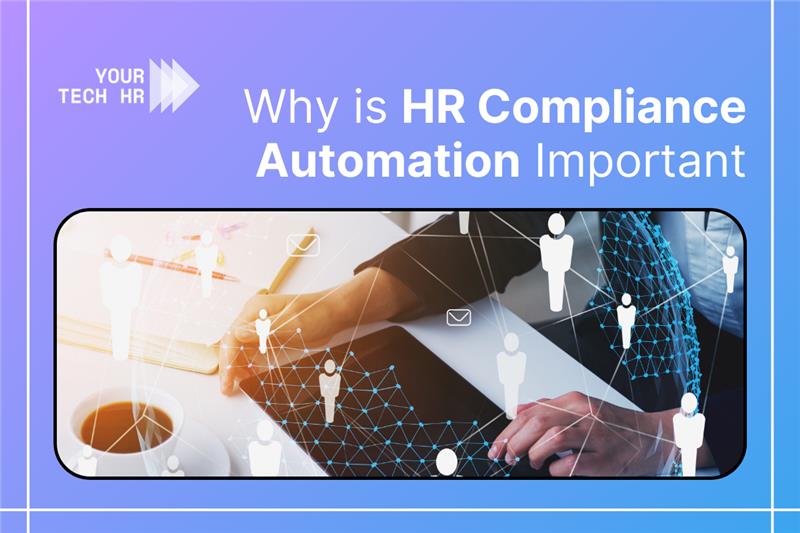In the rapidly evolving landscape of human resources, organizations are increasingly recognizing the importance of HR compliance automation. As regulatory requirements become more complex and the need for operational efficiency grows, automating compliance processes is essential for ensuring that organizations remain compliant while optimizing their HR functions. This blog will explore why HR compliance automation is important, focusing on its benefits, key components, and best practices for implementation.
Understanding HR Compliance Automation
HR compliance automation refers to the use of technology to streamline and automate various HR processes related to compliance. This includes automating tasks such as policy management, employee tracking, training, and reporting. By leveraging automation tools, organizations can ensure that they remain compliant with relevant regulations while minimizing the administrative burden on HR teams.
The Importance of HR Compliance
Maintaining compliance in HR is crucial for several reasons:
- Legal Protection: Adhering to compliance regulations protects organizations from legal repercussions and potential lawsuits.
- Employee Trust: Maintaining compliance fosters a sense of trust among employees, knowing that their rights are protected.
- Operational Efficiency: Effective compliance processes contribute to overall operational efficiency by reducing the risk of errors and misunderstandings.
- Reputation Management: Organizations that prioritize compliance are viewed more favorably by customers and stakeholders.
Benefits of HR Compliance Automation
Integrating HR compliance automation into organizational practices offers numerous advantages:
1. Increased Efficiency
- Automated Processes: Tasks such as data entry, policy updates, and training tracking are handled quickly and accurately by automated systems.
- Streamlined Workflows: Automation helps streamline workflows across departments, reducing bottlenecks and improving overall productivity.
2. Enhanced Accuracy
- Error Reduction: Automation minimizes the risk of human error by ensuring that tasks are performed consistently and accurately.
- Consistent Documentation: Automated systems maintain accurate records of compliance-related documents, reducing the likelihood of misplacing important files.
3. Improved Employee Experience
- Self-Service Options: Employees can handle tasks such as leave requests, benefits enrollment, and personal updates independently.
- Timely Support: Automated systems provide quick responses to employee inquiries regarding policies or procedures.
4. Cost Savings
- Reduced Labor Costs: Automation decreases the need for manual work, allowing organizations to achieve more with fewer resources.
- Efficient Resource Allocation: With reduced administrative burdens, HR teams can reallocate resources toward strategic initiatives that drive organizational growth.
5. Data-Driven Decision Making
- Actionable Insights: Organizations can leverage data analytics to inform decisions related to recruitment, employee development, performance management, and retention strategies.
- Performance Tracking: Automated systems allow for continuous monitoring of key performance indicators (KPIs), enabling timely adjustments to strategies based on real-time data.
Key Components of HR Compliance Automation
To effectively implement HR compliance automation, organizations should focus on the following key components:
1. Policy Management Systems
- Centralized Policy Repositories: Organizations should adopt centralized platforms for storing and managing policies, making it easier for employees to access and understand compliance requirements.
- Automated Policy Updates: Compliance software should include features that automatically update policies based on changes in regulations or organizational practices.
2. Employee Tracking Systems
- Real-Time Monitoring: Organizations should implement advanced tracking systems that provide real-time insights into employee activities related to compliance training and policy adherence.
- Integration with Performance Management: Employee tracking systems should be integrated with performance management tools to ensure that compliance is considered during evaluations and promotions.
3. Training Management Tools
- Automated Training Programs: Organizations should implement automated training programs that deliver essential information to employees at regular intervals.
- Tracking Completion Rates: Automation tools should allow HR teams to track employee participation in training programs, ensuring that all staff members are compliant with necessary training requirements.
4. Reporting and Analytics Tools
- Real-Time Reporting Dashboards: Organizations should utilize reporting tools that provide real-time insights into compliance-related activities.
- Data Analytics Capabilities: Advanced analytics tools enable organizations to identify trends and areas needing attention in their compliance efforts.
Challenges in Implementing HR Compliance Automation
While there are significant benefits associated with implementing HR compliance automation solutions, organizations may encounter challenges during implementation:
1. Resistance to Change
- Communicate Clearly: Articulate the reasons behind changes and how they will benefit both employees and the organization.
- Involve Employees in Decision-Making: Engaging staff members in discussions about new technologies fosters a sense of ownership over changes being made.
2. Data Privacy Concerns
- Building Trust: To alleviate these concerns, organizations must establish clear policies regarding data privacy and ensure transparency about how employee data will be used.
3. Integration Complexity
- Comprehensive Integration Strategy: Developing a clear integration strategy that outlines how different systems will work together is essential for minimizing disruption during implementation.
4. Skill Gap
- Talent Shortage: Organizations may struggle to find qualified candidates who possess the necessary skills.
- Training Needs: Existing staff may require training to effectively use new automation tools; organizations must invest in ongoing education.
Best Practices for Implementing HR Compliance Automation
To successfully navigate these challenges and enhance HR compliance automation efforts, organizations can adopt several best practices:
1. Establish Clear Objectives
- Identify Key Areas for Improvement: Assess current processes to determine where automation can have the most significant impact on compliance efforts.
- Set Measurable Goals: Establish key performance indicators (KPIs) that will help you track progress toward your objectives.
2. Invest in Quality Data Management
- Data Cleaning Processes: Establish processes for regularly cleaning and validating data to ensure accuracy.
- Centralized Data Repositories: Utilize centralized databases or cloud-based solutions that allow for easy access and analysis of employee data across departments.
3. Prioritize Compliance Training
- Hands-On Training Sessions: Offer hands-on training sessions where employees can practice using the new systems in a controlled environment.
- Ongoing Support Resources: Create resources such as user guides or video tutorials that employees can reference as needed after training sessions.
4. Monitor Performance Metrics
- Establish KPIs: Define key performance indicators (KPIs) that align with your goals—such as time-to-hire, employee satisfaction scores, and payroll accuracy rates.
- Use Analytics Tools: Utilize analytics tools to track performance in real time and make data-driven adjustments as needed.
Conclusion
In conclusion, understanding why HR compliance automation is important is essential for organizations seeking innovative ways to enhance service delivery while navigating an increasingly competitive landscape. By leveraging effective strategies alongside advanced technologies—such as predictive analytics, data compliance initiatives, and sustainable practices—businesses can position themselves at the forefront of industry advancements!


